PetNcs
Chameleon Enthusiast
Meller’s Chameleon,
Trioceros melleri
Care Sheet (both in metric and royal units)
The majestic One-Horned, Giant or Elephant-Ear Chameleon is the biggest continental chameleon of Africa.
Its husbandry is full of myths, superstitions and wrong assumptions.
This is why untill now, it is not yet well established in the captivity.
Please keep these gentle giants on the base of facts and not myths, most of which I try to eradicate here...
Meller's Chameleons: beliefs and reality
Meller's Chameleons are absolutely stunning animals, unfortunately, in captivity, lots of myths are parotted, that are not true or only partly and in fact are a barrier for spreading this stunning species in captivity...
Myth 1: they are tollerant to each other
Practice: people cohabit them even in big groups
Wild: they are well known by locals to fight until death, except for breeding season, they live in a mode of one animal per one tree only
Truth: they are same way intollerant as all other chameleons, they just can stay calm long time before showing stress or taking an action. As a result, you can then see crushed heads, bad bites, long healing injuries, fatalities
Myth 2: they are heavy drinkers
Practice: showering, heavy misting and drinking for minutes is the practice many would swear on
Wild: they live in biotopes where they almost never (except for relatively short rainy season) do not face any liquid water, but they encounter heavy fog or clouds on a regular, even daily basis and this is how they hydrate primarily
Truth: they are heavy drinkers to compensate the lack of natural fog hydration and dessication in too low humidity nights in captivity, if provided with fog, they might stop drinking for months
Myth 3: they need big distances to cover
Practice: people give them often huge cages (the bigger the better, that is a good oractice) and even construct funny “gyms” or free ranging areas where they “force” them to exercise
Wild: they are lazy sit-and-wait predators that stay for weeks in thr criwns if treea sitting on one spot and waiting for prey, saving energy and not wasting it for not-purposeful movements
Truth: they do not need to move too much, when given “ideal” conditions, they almost do not move
Myth 4: due to their size, they need big sized feeders
Practice: they are often fed with big feeders, mainly locusts and big roaches, they often get fat and get digestion problems
Wild: despite they are capable of eating birds, small mammals etc, they extremely rarely do, the absolute majority of their food consosts of small pollinators: bees, wasps, flies not exceeding 3/4in total length, they tend to ignore big locusts even if widely available
Truth: they do very well if given many small feeders
Myth 5: they need it hot
Practice: people are offering them often very hot basking spots with temps over 35’C
Wild: they live predominantly in warm but not hot areas and stay the whole say in deeply shaded and windy canopies of big trees, they live in areas with significant night drop, often under 20’C or even lower
True: they do not need it hot and are thriving if not exposed to temps over 30’C at all and staying in ambient temps 23-25’C
Myth 6: they are very calm and hardy
Practice: they are often mistreated and kept in not good conditions because they do not seem to be not ok
Wild: in the wild they live for many years but are same sensitive to all environmental pressures like the other species, just due the size, they withstand bad conditions a bit longer
Truth: they are very sensitive but they are masters of disguise: they pretend to be OK or do not show obvious signs of discomfort for very long. Then they usually “suddenly” die.
The above IMHO etude is based on many years of keeping and breeding practice, examination of over hundred freshly imported and more that 200 long term captive kept WC and CB and field experience with this species from the areas where they naturally occur...
and there are other myths...
Myth:
They like it hot as they live in the lowlands
Truth:
They like it quite cold as they predominantly live on mountains and their slopes or in the area close to ocean. All influemced by cold air either attained through breeze or by pouring down from the hills at night
I have never seen them in the lowland, I have always seen them On mountains and their slopes or on the foot of a mountain
Daily temps
Up to low 80s at noon
Nighttime temps maximum low 70s, more often 60s and upper 50s
Myth:
They are heavy drinkers
Truth:
Most of their biotopes get no rain many months of the year so they do not drink at all
They sit all night in the mist and drink fog
Myth:
They like big food, locusts and roaches
Truth:
They feed predominantly on pollinators of less than 1/2in size like bees, wasps, flies, beetles
They do not eat geasshopers in the wild (they do not get them in the canopies) and rhe refuse locusts
Myth:
They are tollerant and xan be kept in small space together
Truth:
They are well known to the locals, to live in isolated canopies of big trees and never come together except breeding season. If they meet, they fight until one or both is dead
Myth:
They need to be misted and sprayed several times a day, they need high humidity at daytime
Truth:
They live in areas without rain most if the year, they occupy windy canopies with days totally dry with humidity below 40%
They have nothing to drink in the wild most of the year
They get hydrated by fog at night
Trioceros melleri
Care Sheet (both in metric and royal units)
The majestic One-Horned, Giant or Elephant-Ear Chameleon is the biggest continental chameleon of Africa.
Its husbandry is full of myths, superstitions and wrong assumptions.
This is why untill now, it is not yet well established in the captivity.
Please keep these gentle giants on the base of facts and not myths, most of which I try to eradicate here...
Meller's Chameleons: beliefs and reality
Meller's Chameleons are absolutely stunning animals, unfortunately, in captivity, lots of myths are parotted, that are not true or only partly and in fact are a barrier for spreading this stunning species in captivity...
Myth 1: they are tollerant to each other
Practice: people cohabit them even in big groups
Wild: they are well known by locals to fight until death, except for breeding season, they live in a mode of one animal per one tree only
Truth: they are same way intollerant as all other chameleons, they just can stay calm long time before showing stress or taking an action. As a result, you can then see crushed heads, bad bites, long healing injuries, fatalities
Myth 2: they are heavy drinkers
Practice: showering, heavy misting and drinking for minutes is the practice many would swear on
Wild: they live in biotopes where they almost never (except for relatively short rainy season) do not face any liquid water, but they encounter heavy fog or clouds on a regular, even daily basis and this is how they hydrate primarily
Truth: they are heavy drinkers to compensate the lack of natural fog hydration and dessication in too low humidity nights in captivity, if provided with fog, they might stop drinking for months
Myth 3: they need big distances to cover
Practice: people give them often huge cages (the bigger the better, that is a good oractice) and even construct funny “gyms” or free ranging areas where they “force” them to exercise
Wild: they are lazy sit-and-wait predators that stay for weeks in thr criwns if treea sitting on one spot and waiting for prey, saving energy and not wasting it for not-purposeful movements
Truth: they do not need to move too much, when given “ideal” conditions, they almost do not move
Myth 4: due to their size, they need big sized feeders
Practice: they are often fed with big feeders, mainly locusts and big roaches, they often get fat and get digestion problems
Wild: despite they are capable of eating birds, small mammals etc, they extremely rarely do, the absolute majority of their food consosts of small pollinators: bees, wasps, flies not exceeding 3/4in total length, they tend to ignore big locusts even if widely available
Truth: they do very well if given many small feeders
Myth 5: they need it hot
Practice: people are offering them often very hot basking spots with temps over 35’C
Wild: they live predominantly in warm but not hot areas and stay the whole say in deeply shaded and windy canopies of big trees, they live in areas with significant night drop, often under 20’C or even lower
True: they do not need it hot and are thriving if not exposed to temps over 30’C at all and staying in ambient temps 23-25’C
Myth 6: they are very calm and hardy
Practice: they are often mistreated and kept in not good conditions because they do not seem to be not ok
Wild: in the wild they live for many years but are same sensitive to all environmental pressures like the other species, just due the size, they withstand bad conditions a bit longer
Truth: they are very sensitive but they are masters of disguise: they pretend to be OK or do not show obvious signs of discomfort for very long. Then they usually “suddenly” die.
The above IMHO etude is based on many years of keeping and breeding practice, examination of over hundred freshly imported and more that 200 long term captive kept WC and CB and field experience with this species from the areas where they naturally occur...
and there are other myths...
Myth:
They like it hot as they live in the lowlands
Truth:
They like it quite cold as they predominantly live on mountains and their slopes or in the area close to ocean. All influemced by cold air either attained through breeze or by pouring down from the hills at night
I have never seen them in the lowland, I have always seen them On mountains and their slopes or on the foot of a mountain
Daily temps
Up to low 80s at noon
Nighttime temps maximum low 70s, more often 60s and upper 50s
Myth:
They are heavy drinkers
Truth:
Most of their biotopes get no rain many months of the year so they do not drink at all
They sit all night in the mist and drink fog
Myth:
They like big food, locusts and roaches
Truth:
They feed predominantly on pollinators of less than 1/2in size like bees, wasps, flies, beetles
They do not eat geasshopers in the wild (they do not get them in the canopies) and rhe refuse locusts
Myth:
They are tollerant and xan be kept in small space together
Truth:
They are well known to the locals, to live in isolated canopies of big trees and never come together except breeding season. If they meet, they fight until one or both is dead
Myth:
They need to be misted and sprayed several times a day, they need high humidity at daytime
Truth:
They live in areas without rain most if the year, they occupy windy canopies with days totally dry with humidity below 40%
They have nothing to drink in the wild most of the year
They get hydrated by fog at night
Attachments
-
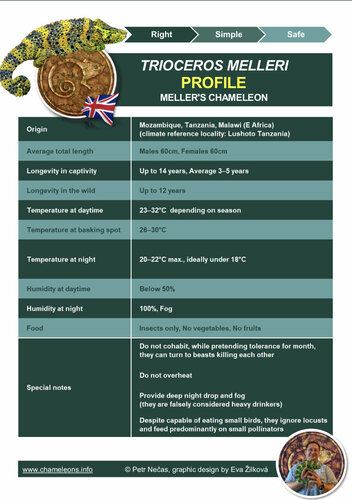 1C073303-DBBD-4B1A-A1A4-0767B298DB5C.jpeg152.6 KB · Views: 239
1C073303-DBBD-4B1A-A1A4-0767B298DB5C.jpeg152.6 KB · Views: 239 -
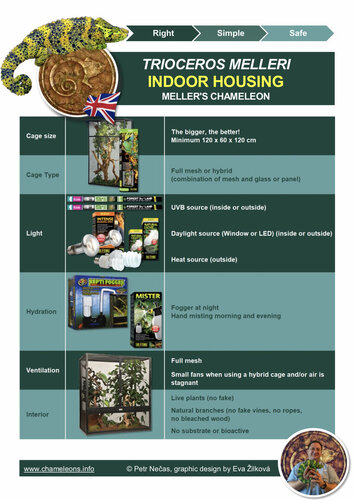 BB91A99F-E86B-4046-9C91-89F803866FAC.jpeg164.7 KB · Views: 217
BB91A99F-E86B-4046-9C91-89F803866FAC.jpeg164.7 KB · Views: 217 -
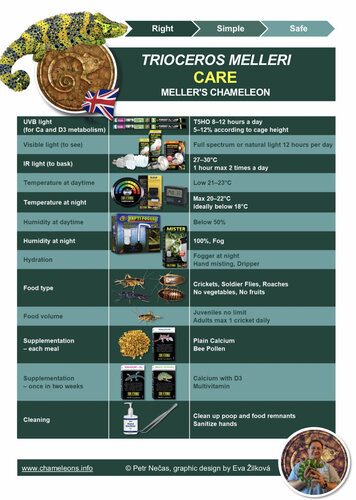 5BA9538F-EA25-4EBE-B0E1-33B43FA3701E.jpeg168.2 KB · Views: 230
5BA9538F-EA25-4EBE-B0E1-33B43FA3701E.jpeg168.2 KB · Views: 230 -
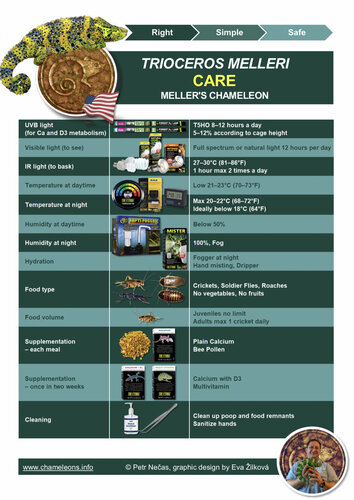 5219E8DC-FC27-4721-9EFE-BF7BEE3CE42B.jpeg172.9 KB · Views: 216
5219E8DC-FC27-4721-9EFE-BF7BEE3CE42B.jpeg172.9 KB · Views: 216 -
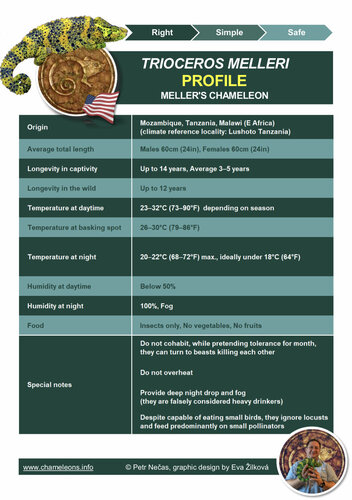 A8047F16-DB6D-4419-80DC-2F313CC5A590.jpeg153.7 KB · Views: 228
A8047F16-DB6D-4419-80DC-2F313CC5A590.jpeg153.7 KB · Views: 228 -
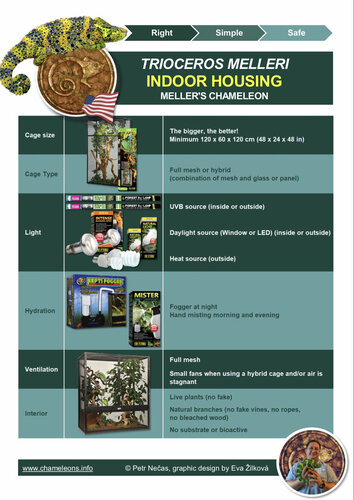 30C1B0C9-8332-4D95-832F-FCE0E34D3C2B.jpeg168.8 KB · Views: 222
30C1B0C9-8332-4D95-832F-FCE0E34D3C2B.jpeg168.8 KB · Views: 222





